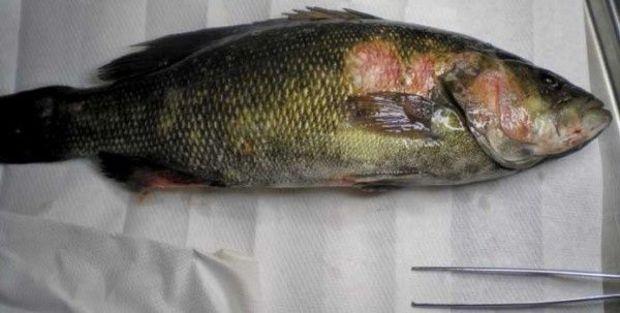 The Chesapeake Bay Foundation has just released its report on Smallmouth Bass populations in Bay tributaries around Maryland, West Virginia, and Virginia. And the report isn't glowing.
The Chesapeake Bay Foundation has just released its report on Smallmouth Bass populations in Bay tributaries around Maryland, West Virginia, and Virginia. And the report isn't glowing.
Smallmouth bass act as indicators of water quality levels because they do not tolerate environmental toxins well. So while the particular sources of death and disease among the fish population aren't completely clear, experts set forth that the high nitrous and phosphorous levels in certain rivers are contributing to the fish's increasing mortality rates. Scientists believe that nitrogen and phosphorus pollution may be contributing to fish deaths and diseases in two ways. The first is by spurring the growth of parasites (myxozoans and trematoads) and their hosts (worms and snails). The second is by feeding algal blooms that raise pH levels and lower oxygen concentrations, stressing young smallmouth bass.
The illuminating report is
here, as well as helpful ideas for cleaning up the Bay and protecting one of the best sport fish around.
 The Chesapeake Bay Foundation has just released its report on Smallmouth Bass populations in Bay tributaries around Maryland, West Virginia, and Virginia. And the report isn't glowing.
The Chesapeake Bay Foundation has just released its report on Smallmouth Bass populations in Bay tributaries around Maryland, West Virginia, and Virginia. And the report isn't glowing. The Chesapeake Bay Foundation has just released its report on Smallmouth Bass populations in Bay tributaries around Maryland, West Virginia, and Virginia. And the report isn't glowing.
The Chesapeake Bay Foundation has just released its report on Smallmouth Bass populations in Bay tributaries around Maryland, West Virginia, and Virginia. And the report isn't glowing.